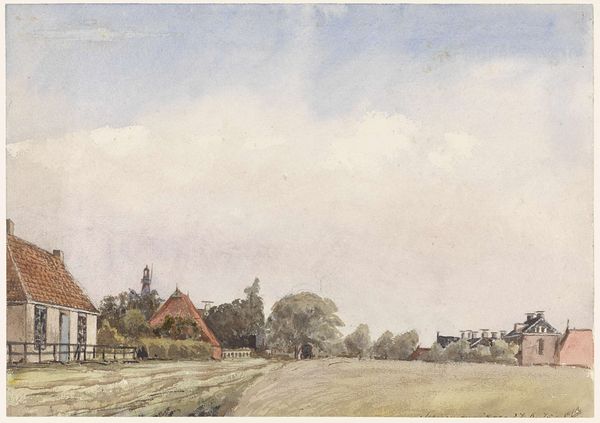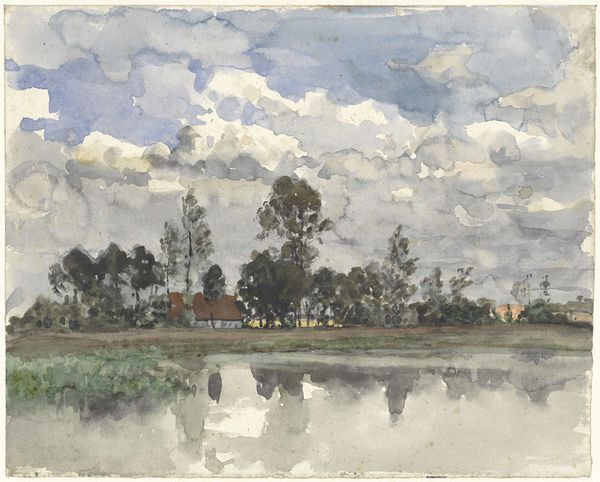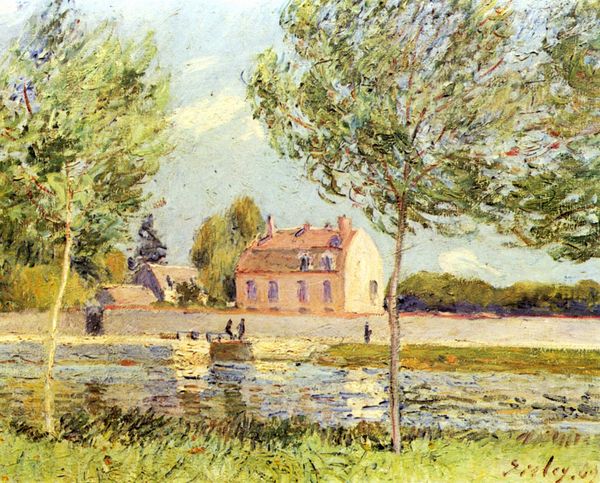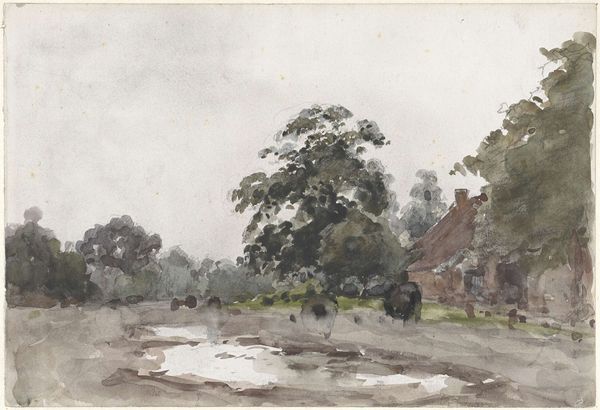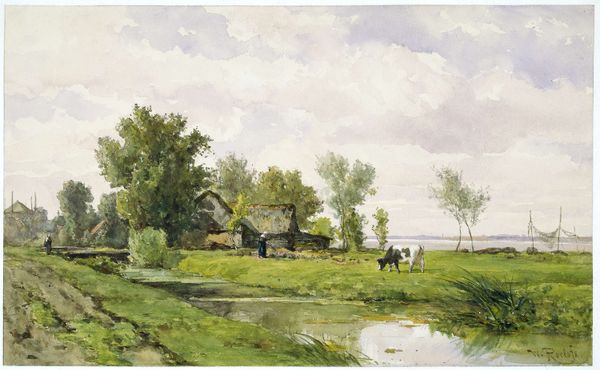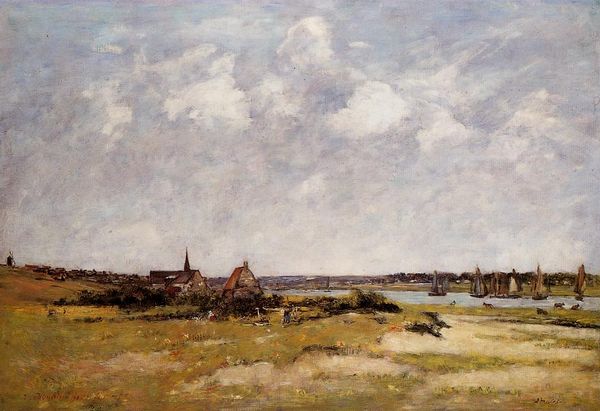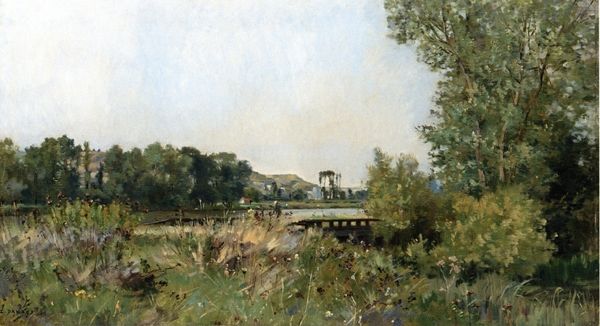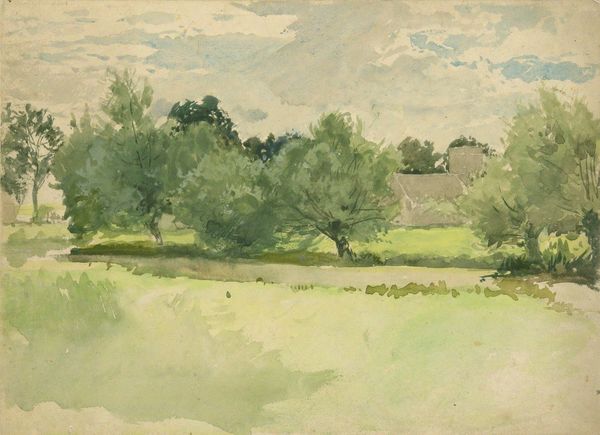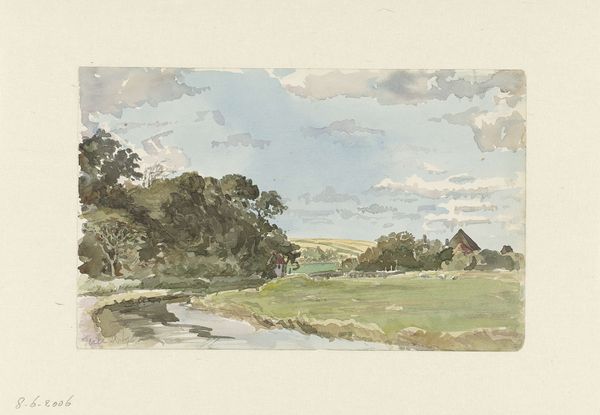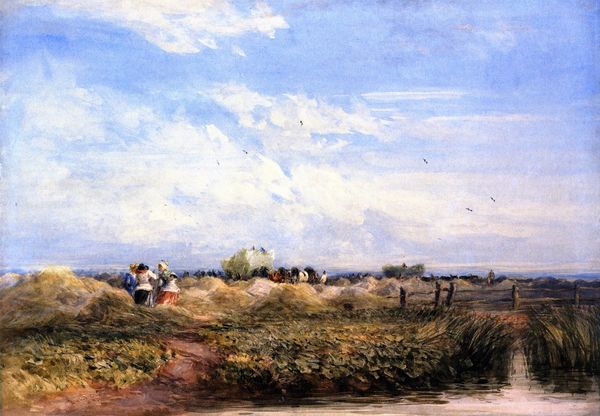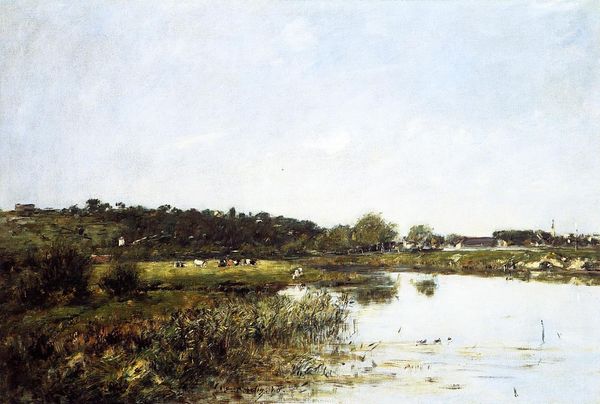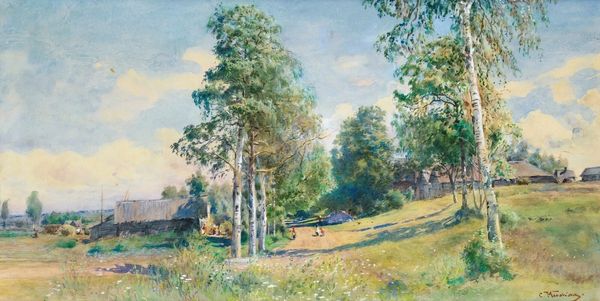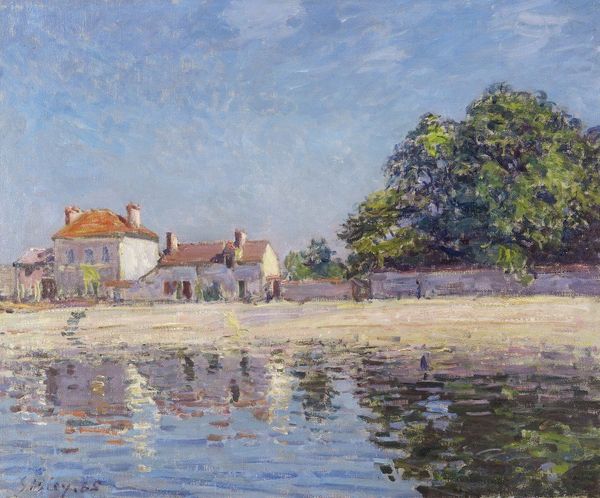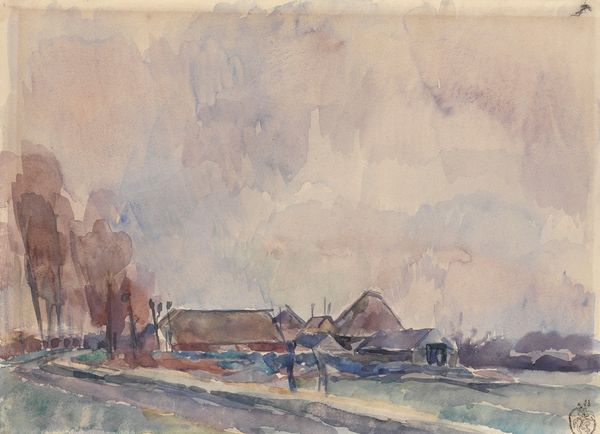
painting, plein-air, watercolor
#
painting
#
impressionism
#
plein-air
#
landscape
#
oil painting
#
watercolor
#
road
#
genre-painting
#
watercolor
Copyright: Public domain
Editor: This is Childe Hassam's "Canal Scene" from 1883. It's a watercolor painting. The colours feel so light and airy, and the overall impression is quite peaceful. It also looks unfinished. What do you see in this piece? Art Historian: It strikes me as a beautiful example of Impressionism moving beyond solely depicting upper-class leisure. Hassam has captured a seemingly ordinary scene of rural life. Look at the setting - what could you say about it based on its aesthetic value? Editor: Well, it definitely isn't glamorous. The canal seems to serve more of a practical, maybe even industrial purpose than being picturesque. It gives me the feeling of daily routines rather than artistic representation. Art Historian: Exactly. Consider how Impressionism, particularly in America, began depicting working-class subjects and urban landscapes. The "Canal Scene," with its muted colors and focus on the working class, participates in a larger socio-political conversation about who and what gets represented in art. It humanizes the experience. Editor: So you're saying this scene is more than just a pretty picture; it reflects societal changes and the role of art? Art Historian: Precisely! Artists were pushing back against academic traditions and choosing subjects that resonated with the everyday experiences of the common person. Even the fleeting, "unfinished" quality you noticed, reflects the shift toward capturing an immediate, personal experience rather than striving for idealized perfection. Now I'm curious, has your viewpoint shifted in the process? Editor: It has! I initially saw the painting as peaceful, but now I realize it's more of a statement about representing all aspects of life in art. That adds a lot more depth to it for me. Art Historian: I am so glad to see you understand more of what to notice now. The purpose and placement of artworks are inextricably related to broader public narratives.
Comments
No comments
Be the first to comment and join the conversation on the ultimate creative platform.
